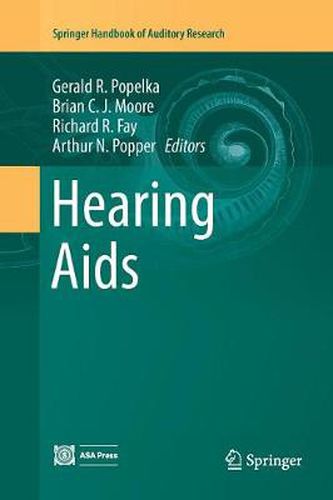Readings Newsletter
Become a Readings Member to make your shopping experience even easier.
Sign in or sign up for free!
You’re not far away from qualifying for FREE standard shipping within Australia
You’ve qualified for FREE standard shipping within Australia
The cart is loading…






This title is printed to order. This book may have been self-published. If so, we cannot guarantee the quality of the content. In the main most books will have gone through the editing process however some may not. We therefore suggest that you be aware of this before ordering this book. If in doubt check either the author or publisher’s details as we are unable to accept any returns unless they are faulty. Please contact us if you have any questions.
This volume will serve as the first Handbook of its kind in the area of hearing aid research, often the least-defined, least-understood, part of the multi-disciplinary research process. Most scientific training is very advanced within the particular disciplines but provides little opportunity for systematic introduction to the issues and obstacles that prevent effective hearing-aid related research. This area has emerged as one of critical importance, as signified by a single specialized meeting (the International Hearing Aid Conference, IHCON) that brings together specialists from the disparate disciplines involved, including both university and industry researchers. Identification of the key steps that enable high-impact basic science to ultimately result in significant clinical advances that improve patient outcome is critical. This volume will provide an overview of current key issues in hearing aid research from the perspective of many different disciplines, not only from the perspective of the key funding agencies, but also from the scientists and clinicians who are currently involved in hearing aid research. It will offer insight into the experience, current technology and future technology that can help improve hearing aids, as scientists and clinicians typically have little or no formal training over the whole range of the individual disciplines that are relevant. The selection and coverage of topics insures that it will have lasting impact, well beyond immediate, short-term, or parochial concerns.
$9.00 standard shipping within Australia
FREE standard shipping within Australia for orders over $100.00
Express & International shipping calculated at checkout
This title is printed to order. This book may have been self-published. If so, we cannot guarantee the quality of the content. In the main most books will have gone through the editing process however some may not. We therefore suggest that you be aware of this before ordering this book. If in doubt check either the author or publisher’s details as we are unable to accept any returns unless they are faulty. Please contact us if you have any questions.
This volume will serve as the first Handbook of its kind in the area of hearing aid research, often the least-defined, least-understood, part of the multi-disciplinary research process. Most scientific training is very advanced within the particular disciplines but provides little opportunity for systematic introduction to the issues and obstacles that prevent effective hearing-aid related research. This area has emerged as one of critical importance, as signified by a single specialized meeting (the International Hearing Aid Conference, IHCON) that brings together specialists from the disparate disciplines involved, including both university and industry researchers. Identification of the key steps that enable high-impact basic science to ultimately result in significant clinical advances that improve patient outcome is critical. This volume will provide an overview of current key issues in hearing aid research from the perspective of many different disciplines, not only from the perspective of the key funding agencies, but also from the scientists and clinicians who are currently involved in hearing aid research. It will offer insight into the experience, current technology and future technology that can help improve hearing aids, as scientists and clinicians typically have little or no formal training over the whole range of the individual disciplines that are relevant. The selection and coverage of topics insures that it will have lasting impact, well beyond immediate, short-term, or parochial concerns.